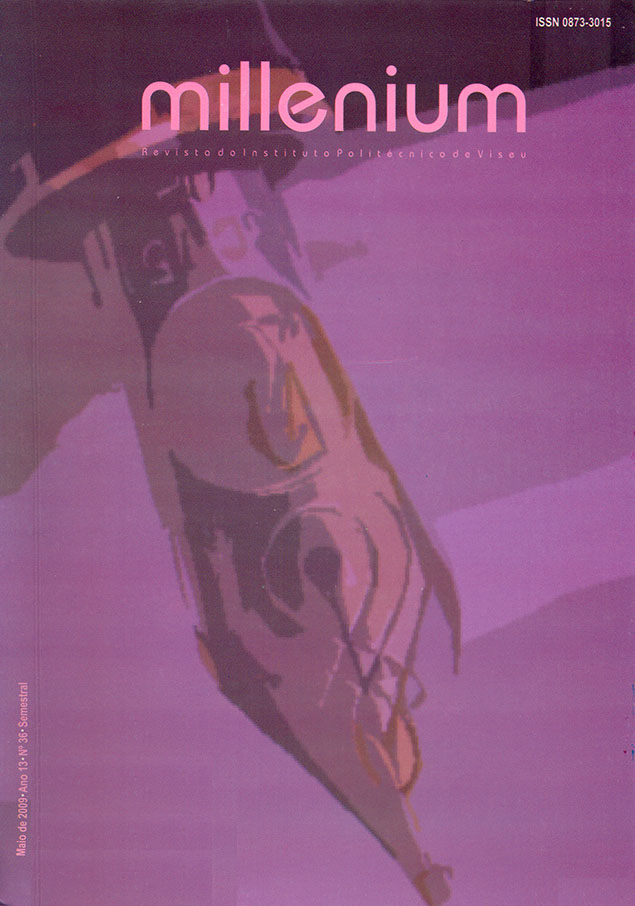Oral Literature - An Art Form From Immemorial Time
Resumen
In order to accurately answer the question above, there is a need to offer a conceptual framework and critical analysis of some keywords, such as culture, tradition, heritage, folklore and memory, as they support and complement one another. Therefore, I will try to provide answers not only to the prior question, but also to the following ones: In what way(s) does oral heritage form a part of culture? What is meant by culture? How reliable can oral heritage be? Is oral heritage a valid means of conveying culture and, thus, a collective representation of identity? Are heritage and tradition the same?
Descargas
Citas
• ARENDT, Hannah. (1961). “The Crisis in Culture: Its Social and its Political Significance” in Between Past and Future. New York: The Viking Press, pp. 197-226.
• BASCOM, William R. “Folklore and Anthropology” in Alan Dundes (ed.). (1965). The Study of Folklore. Englewood Cliffs, New Jersey: Prentice-Hall, pp. 25-33.
• BENEDICT, Ruth. (1959). Patterns of Culture. Boston: Houghton Mifflin Company.
• BENNETT, Tony, Lawrence Grossberg and Meaghan Morris (eds.). (2005). New Keywords: A Revised Vocabulary of Culture and Society. Malden, MA: Blackwell Publishing.
• BLAKEY, Michael L. “American nationality and ethnicity in the depicted past” in Peter Gathercole and David Lowenthal (eds). (1990). The Politics of the Past. London: Unwin Hyman Ltd, pp. 38-48.
• CLIFFORD, James. (1988). The Predicament of Culture: Twentieth-Century Ethnography, Literature and Art. Cambridge: Harvard University Press.
• DUNDES, Alan. (1965). “What is Folklore?” in The Study of Folklore. Englewood Cliffs, New Jersey: Prentice-Hall, pp. 1-3.
• HANDOO, Jawaharlal. (1989). Folklore: An Introduction. CIIL Folklore Series-7. Mysore: Central Institute of Indian Languages.
• KROEBER, A.L. and Clyde Kluckhohn. (1952). Culture: A Critical Review of Concepts and Definitions. New York: Vintage Books.
• MILES, Robert and Rudy Torres. “Does ‘Race’ Matter? Transatlantic Perspectives on Racism after ‘Race Relations’” in Vered Amit-Talai and Caroline Knowles (eds.). (1996). Re-Situating Identities: The Politics of Race, Ethnicity and Culture. Peterborough, Ontario: Broadview Press, pp. 24-46.
• MURJI, Karim. “Race” in Bennett et al. (2005). New Keywords: A Revised Vocabulary of Culture and Society. Malden, MA: Blackwell Publishing, pp. 290-296.
• ORTIZ, Simon. (1992). Woven Stone. Tucson: The University of Arizona Press.
• PROPP, Vladimir. Morphology of the Folktale. (1968). Austin: University of Texas Press.
• RAGLAN, FitzRoy Richard Somerset, Baron. (1936). The Hero: A Study in Tradition, Myth, and Drama. London: Methuen.
• RICH, Paul. (1986). Race and Empire in British Politics. Cambridge: Cambridge University Press.
• ROCHER, Guy. “What is culture?” in Lorne Tepperman and James Curtis (eds.) (1988). Readings in Sociology: An Introduction. Toronto: McGraw-Hill Ryerson Limited, pp. 46-49.
• SCHWARZ, Bill. “Heritage” in Bennett et al. (2005). New Keywords: A Revised Vocabulary of Culture and Society. Malden, MA: Blackwell Publishing, pp. 154-156.
• SIMS, Martha C. and Martine Stephens. (2005). Living Folklore: An Introduction to the Study of People and their Traditions. Logan: Utah State University Press.
• TAYLOR, Archer. “Folklore and the Student of Literature” in Alan Dundes (ed.). (1965). The Study of Folklore. Englewood Cliffs, New Jersey: Prentice-Hall, pp. 34-42.
• VON Sydow, Carl Wilhelm. “Folktale Studies and Philology: Some Points of View” in Alan Dundes (ed.). (1965). The Study of Folklore. Englewood Cliffs, New Jersey: Prentice-Hall, pp. 219-242.
• WEBER, Max. (1949). The Methodology of the Social Sciences, trans. Edward A. Shils and Henry A. Finch. New York: The Free Press of Glencoe.
• WILLIAMS, Raymond. (1976). Keywords: A Vocabulary of Culture and Society. New York: Oxford University Press.
• __________________. (1983). Keywords: A Vocabulary of Culture and Society. London: Fontana Paperbacks.
Descargas
Publicado
Cómo citar
Número
Sección
Licencia
Los autores que sometan propuestas para esta revista estarán de acuerdo con los siguientes términos:
a) Los artículos serán publicados según la licencia Licença Creative Commons (CC BY 4.0), conforme el régimen open-access, sin cualquier coste para el autor o para el lector.
b) Los autores conservan los derechos de autor y conceden a la revista el derecho de la primera publicación, se permite la divulgación libre del trabajo, desde que sea correctamente atribuida la autoría y la publicación inicial en esta revista.
c) Los autores están autorización para firmar contratos adicionales separadamente, para la distribución no exclusiva de la versión del trabajo publicada en esta revista (ej.: publicar en un repositorio institucional o como capítulo de un libro), con reconocimiento de la autoría y publicación inicial e esta revista.
d) Los autores tienen permiso y son alentados a publicar y distribuir su trabajo on-line (ej.: en repositorios instituciones o en su página personal) ya que eso podrá generar alteraciones productivas, así como aumentar el impacto y la citación del trabajo publicado.
Documentos necesarios para la sumisión
Plantilla del artículo (formato editable)





